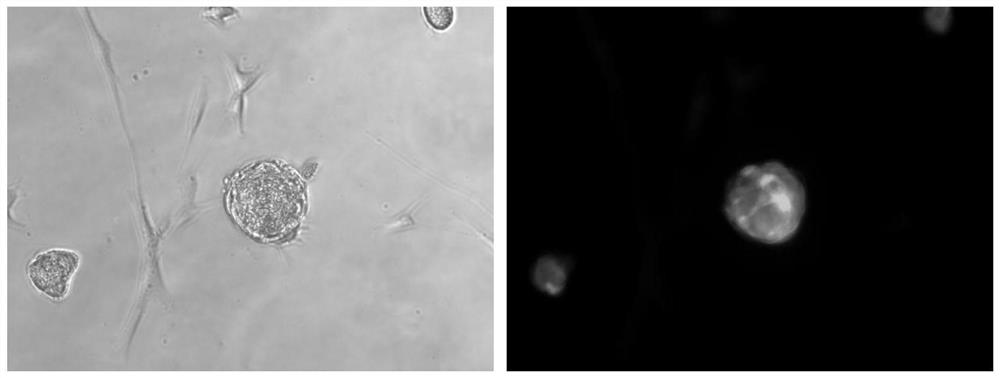Method for efficiently and rapidly reprogramming somatic cells into neural stem cells and application thereof
A neural stem cell and reprogramming technology, applied in the field of efficient and rapid reprogramming of somatic cells into neural stem cells, can solve the problems of low efficiency of neural stem cell clone formation, low efficiency of somatic cell transformation, and long period of somatic cell transdifferentiation. Beneficial for clinical application, high reprogramming efficiency, avoiding the effect of mutation or integration
- Summary
- Abstract
- Description
- Claims
- Application Information
AI Technical Summary
Problems solved by technology
Method used
Image
Examples
Embodiment Construction
[0061] The principles and features of the present invention are described below in conjunction with examples, which are only used to explain the present invention and are not intended to limit the scope of the present invention.
[0062] Step 1: Isolation and culture of human foreskin fibroblasts
[0063] (1) Get the fresh foreskin tissue just removed from the operation and rinse it with PBS for 3 times to remove blood stains;
[0064] (2) Use tweezers and scissors to remove the attached subcutaneous fat tissue, capsule connective tissue and necrotic tissue, rinse with PBS 3 times, and cut into about 1mm 3 small pieces;
[0065] (3) Transfer the tissue into a centrifuge tube, add a little trypsin, and incubate in a 37°C incubator for 30 minutes;
[0066] (4) Centrifuge at 1000rpm for 5min, discard the supernatant, add 1mmg / ml collagenase type IV, and incubate in a 37°C incubator for 30min;
[0067] (5) Add hPFF medium to stop digestion, centrifuge at 1000rpm for 5min, disca...
PUM
 Login to View More
Login to View More Abstract
Description
Claims
Application Information
 Login to View More
Login to View More - R&D Engineer
- R&D Manager
- IP Professional
- Industry Leading Data Capabilities
- Powerful AI technology
- Patent DNA Extraction
Browse by: Latest US Patents, China's latest patents, Technical Efficacy Thesaurus, Application Domain, Technology Topic, Popular Technical Reports.
© 2024 PatSnap. All rights reserved.Legal|Privacy policy|Modern Slavery Act Transparency Statement|Sitemap|About US| Contact US: help@patsnap.com










